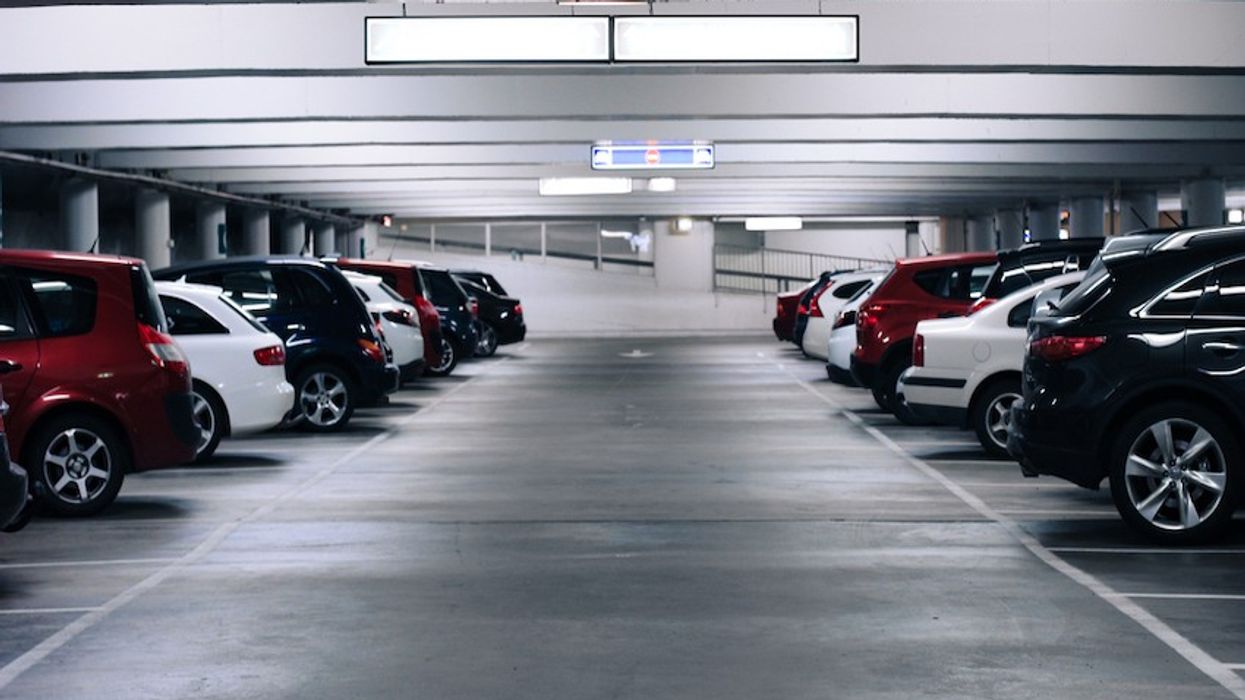To those who believe cities are for cars, the parking lot is space gained. To those who believe cities are for people, the parking lot is space lost.
For a century now, Toronto has been a city for cars. As our late mayor Rob Ford famously reminded us, streets here “are built for buses, cars, and trucks….” In his view, a road can’t have too many lanes or too few cyclists; a speed limit can’t be too fast or streetcars too slow, and parking lots can’t be too numerous. That’s why malls in Toronto and its suburbs are adrift in oceans of asphalt filled (or not) with parked cars. Because they are laid out as if Boxing Day came 365 times a year, they’re usually empty.
Towers, corporate or condo, are also under pressure to accommodate the automobile. The difference is that their parking lots are vertical and depending on location, often underground. Builders must dig four, five or six storeys below grade to create the space necessary for parked cars. Those spatial voids don’t come cheap. The cost is, of course, passed along to buyers, another reason affordable housing is so scarce in Toronto.
But it gets worse. As Donald Shoup, the celebrated UCLA planning professor, points out in his seminal 2005 tome, The High Cost of Free Parking:
“…parking requirements subsidize cars, increase traffic congestion, pollute the air, encourage sprawl, increase housing costs, degrade urban design, prevent walkability, damage the economy, and penalize people who cannot afford a car…. Parking requirements in zoning ordinances are poisoning our cities with too much parking.”
READ: Toronto Could Remove Parking Minimums for New Developments
So when Toronto City Council instructed staff last year to review parking policy the move was as welcome as it was unexpected. Even more remarkable was the recently released report’s otherwise obvious assertion that ending minimum parking requirements would help eliminate the over-supply of parking spots. And, it added, “…moving towards reducing or… eliminating minimum automobile parking requirements would better support the Official Plan’s vision to create compact complete communities and be consistent with policies aimed at reducing auto-dependence.”
No kidding.
To be fair, Toronto has been lowering parking minimums for years. Unlike, say, Mississauga, where vast swaths of the city are reserved for parked cars, this city has accepted, sometime reluctantly, that not all residents want, or expect, to drive everywhere, that some Torontonians actually choose to take the TTC, cycle or even walk.
Depending on various factors – proximity to transit, availability of existing parking and location – parking requirements vary. For example, a downtown condo tower must include .5 of a parking spot per one-bedroom condo unit. The same complex on a main street without a subway requires .8 of a parking spot for each one-bedroom condo. By contrast, a downtown condo needs just .3 of a parking spot per bachelor unit.
In a 60-storey residential tower, these ratios are economically viable, but in the mid-rise projects the city hope will line Toronto’s main streets, these numbers can make things impossible. In the case of affordable housing, the situation is even tougher.
But facing a global warming deadline, one of our most pressing concerns is to pivot Toronto from auto-dependency toward more efficient forms of mobility – public transit, bicycles, even scooters and, yes, walking. Since the 1920s, municipal bias in favour of cars has been factored into all facets of civic infrastructure, physical, legislative and social. That includes everything from rules and regulations to the layout of streets, the design and cost of housing as well as the social norms by which we live.
That’s why turning parking minimums in parking maximums represents such a significant policy shift. The story won’t likely appear on local front pages or lead any TV newscasts, but it would be a mistake to underestimate its potential to change not just how we get around but our relationship with the city. By removing the carefully considered but largely invisible measures that empower car culture, we can begin to reclaim the city from the automobile.
Ironically, perhaps, Covid-19 has given us a glimpse of what the city could be with fewer cars. Thanks to the CaféTO program, we have seen how open streets can transform Toronto.
But as recently as 2009 when a condo tower with no parking was proposed for Dundas and University, planners said no. In the end, nine spots were added and council said yes. After all, the building was mere metres from a streetcar line and a subway stop.
Now planners have apparently accepted that reality trumps their rules and regulation. Suddenly it seems anything is possible in Toronto.


















